The Andyson Platinum R 1200W PSU Review
by E. Fylladitakis on April 24, 2015 8:00 AM EST- Posted in
- Cases/Cooling/PSUs
- 1200W
- 80Plus Platinum
- Andyson
The Andyson Platinum R 1200W PSU - External Appearance
Visually, the Andyson Platinum R 1200W is not exactly a work of art yet it does have an element of subtleness and can be fairly appealing, depending on your requirements. The long chassis is sprayed with a grainy matte black paint, a circular finger guard covers the cooling fan and a subtle sticker with the company logo has been placed on its side.
A decorative sticker covers the right side of the chassis, facing towards the windowed side panel if the PSU is installed with the fan facing upwards. If the PSU is installed with the fan facing downwards, the sticker will be facing the right panel of the case and it will be upside down.
The left side of the PSU is almost entirely plain, with the exception of a series logo printed at the lower right corner of the chassis. This logo will be upside down if the PSU is installed with the fan facing downwards.
The rear of the PSU is a little interesting, with the AC cable receptacle and the on/off switch placed on a different, white metallic frame that covers nearly half of the surface. The other half is perforated for the cooling air to escape to the exterior of the case.
A large number of connectors for the modular cables take up most of the space at the front of the unit. The rest of the surface is covered by a sticker, serving as a legend for the connectors and as a warning label. Funnily, it advises against the removal of the PSU cover and warns that the warranty will be void if the seal is broken, yet this cover cannot be removed and there is no warranty sticker to be found anywhere.
The sticker with the electrical specification of the PSU can be found at the top of the chassis.




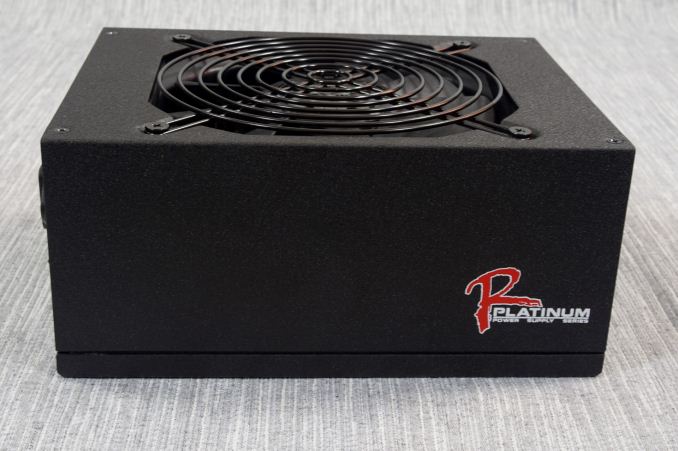
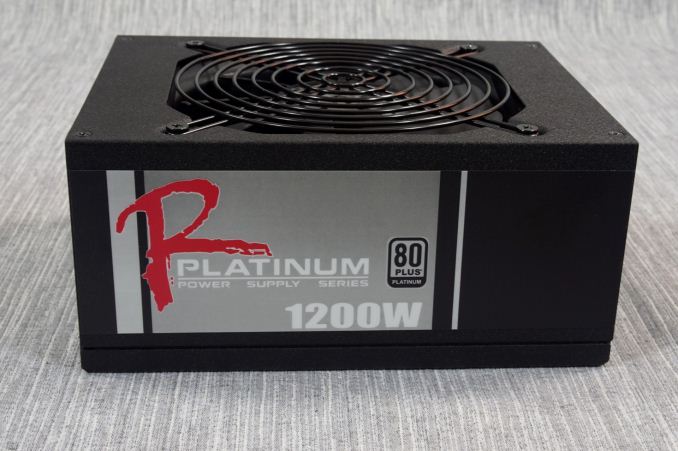
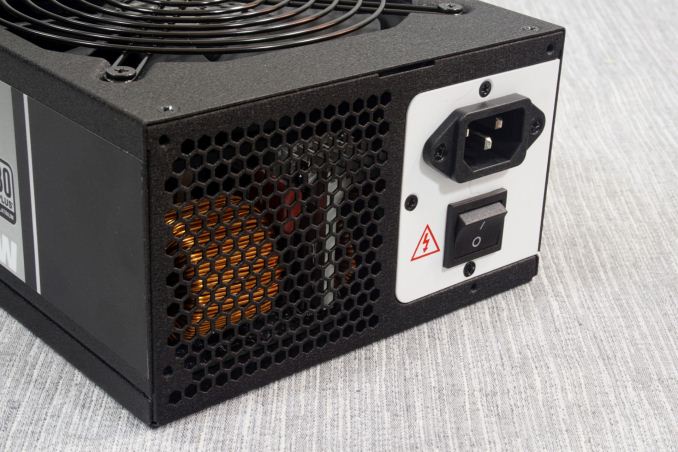
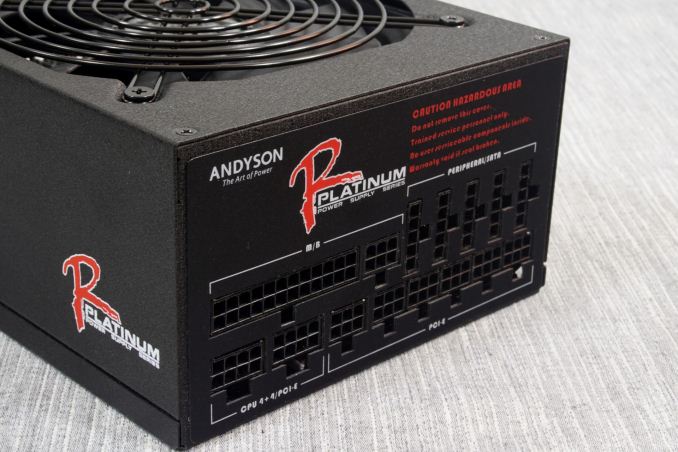
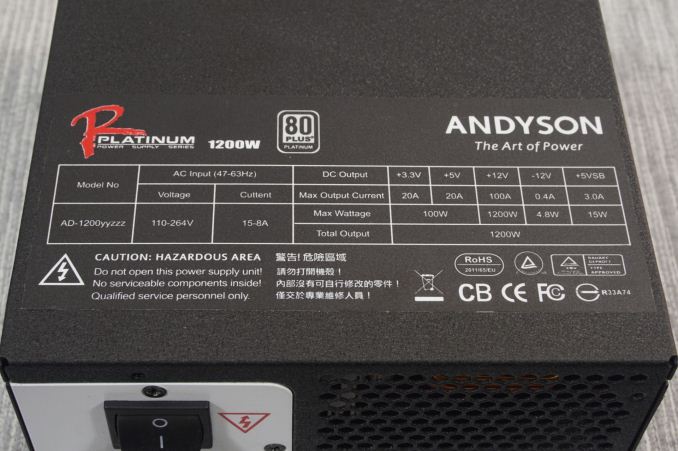








46 Comments
View All Comments
joex4444 - Friday, April 24, 2015 - link
Worth pointing out is this PSU, and many others in the 850W+ category, features two EPS 4+4 pin connectors. What's this good for? Dual CPU motherboards, which in today's market means dual LGA-2011(-3) Xeons. Workstations are the target, not your gaming machine.DanNeely - Friday, April 24, 2015 - link
Some high end gaming boards use more than a single 8 pin EPS connector. MY MSI MPower MAX 1150 board has an 8 and a 4 pin in the CPU area; and a 6 pin PCI connector just above the first slot for if you're maxing out the x16 slots.It's a modular design so they can go bucket list on extra cables; from the markings on the side of the PSU itself you could plug a 6th PCIe cable in there if you bought one from a 3rd party.
KAlmquist - Sunday, April 26, 2015 - link
Even if you installed two Xeon E5-2687W v3 processors, that's only 320 watts of TDP, so you would need to have some other power hog in the system to justify an 850W+ power supply.Samus - Saturday, April 25, 2015 - link
I hope they make a 600w version almost identical to this. I have nothing against teapo caps, my old PC power and cooling unit is littered with them (pre-ocz pcp&c) and it's been running solid for 8 years. It was sent in for warranty at 4.5 years because I overloaded it on my coin miners, but the repair indicated it was just a fuse.Back to the point, this thing looks really good on paper for the price and I'd pay half as much for half the output since my gaming pc maxes out at 500 watts at the wall. At 80% load a 600 watt unit would be over 90% efficient and near silent at high ambient temps.
My cases have no window, so asthetics? Lets just say I care more about the clean braided cables and no flashy colors.
romrunning - Friday, April 24, 2015 - link
If we click on Case/Cooling/PSU section on Anandtech & look for all of the PSU reviews, there has been a notable dearth of "normal" PSUs being reviewed. In fact, of the last 6 listed spanning some months, the lowest one was 650W, along with a 850.I understand that mfgs supply their "best" and we are supposed to reason that the same tech trickles down to lower end models, but the end-user (us) also have said we want to see those reviews of the low-end models. We want to see where mfgs cheap out on lower-end components in the 450-550W range rather than the 1000-2000W behemoths. We want to know the best graphics card we can get to run on the lowest amount of power in single GPU setups. We want to know which ones we can buy online that are good value for the money in our single GPU setups.
E.Fyll, I hope you can ask for some 450-600W units to review, or even better, buy some of the best-sellers online & let us know the results. That would be the most informative & useful to me as I buy one for my new system
chlamchowder - Friday, April 24, 2015 - link
I have to second this - I can't imagine many people running more than two graphics cards (which is what you'd need to make a 600 or 850W supply inadequate).Also, I don't get the trickle down argument.
"this 1kW PSU looks good, so I'm going to buy the 600W model because it has the same sticker" <- said no one, ever
Samus - Saturday, April 25, 2015 - link
It's funny you mention that becAuse my gaming PC has a gtx970 Sli setup with a Xeon e3-1230 and 3 drives...still tops out at 500w at the wall in occtDanNeely - Friday, April 24, 2015 - link
I'd actually like to see a few from even lower down the power level. Eg my nas box is normally sub-50W. On Newegg the smallest 80+ platinum PSU is $84 for 400W; gold is either $62 for 360W, or $50 + an adapter to mount an SFX PSU in an ATX case; bronze would get me 300W for $37; going all the way down to just 80+, I could get 300W for $39 (which obviously doesn't make any sense) or 220W for $57 in the even smaller Flex ATX form factor.Assuming I stick with good brands I don't anticipate any power quality problems; but which would actually be most efficient at that low a power level. Only the 80+ 220W actually has an efficiency guarantee at that low a load. Only 80+ titanium is speced at 10% load; but from past history probably won't trickle down to tiny units for a while; and at least initially will probably be so expensive that it only makes sense if you're living somewhere with really high electric prices (Hawaii, Germany, etc) or trying to go off the grid completely.
I'll probably be replacing my current NAS at the end of the year; and I'd really like some data here to help guide my build vs buy decision.
Laststop311 - Saturday, April 25, 2015 - link
I would go with just 80+ broze for a low power nas box. Even if you are 10% less efficient at such a low wattage you are only talking about 5 extra watts of power thats like .005kw/h of extra electricty vs a platinum unit. Just get a high quality top brand of a 300 watt 80+ bronze for 35-50 dollars. You can;t go wrong with seasonic i believe they have a nice 300 watt bronze unit. the newer SeaSonic SSP-300SE is a very nice choice for 36.99. Going to be pretty hard to find less than 300 watts and 37 dollars is already very cheap.TurboTastic - Friday, April 24, 2015 - link
I quote the author as of 6 months ago:> Even though there are plenty of >1kW consumer power supply units available today, it is well known that these represent a very small portion of the actual market, as the power requirements of a typical home or office PC are far lower than that.
and before that, in the SilverStone NJ520 review:
> Are you tired of reading reviews of high output power supply units? It's true that 99% of personal computers out there do not require something capable of outputting more than 500-550 Watts, and even that may be overkill for quite a few people.
YES WE ARE. And that was 9 months ago...
"Normal" PSUs are on the order of $50, so even if you're not getting low-wattage PSUs from the manufacturers, order a SeaSonic SS-300ET for $35 from Newegg, stick it (and a few similar ones) in the test bench, and show the graphs!